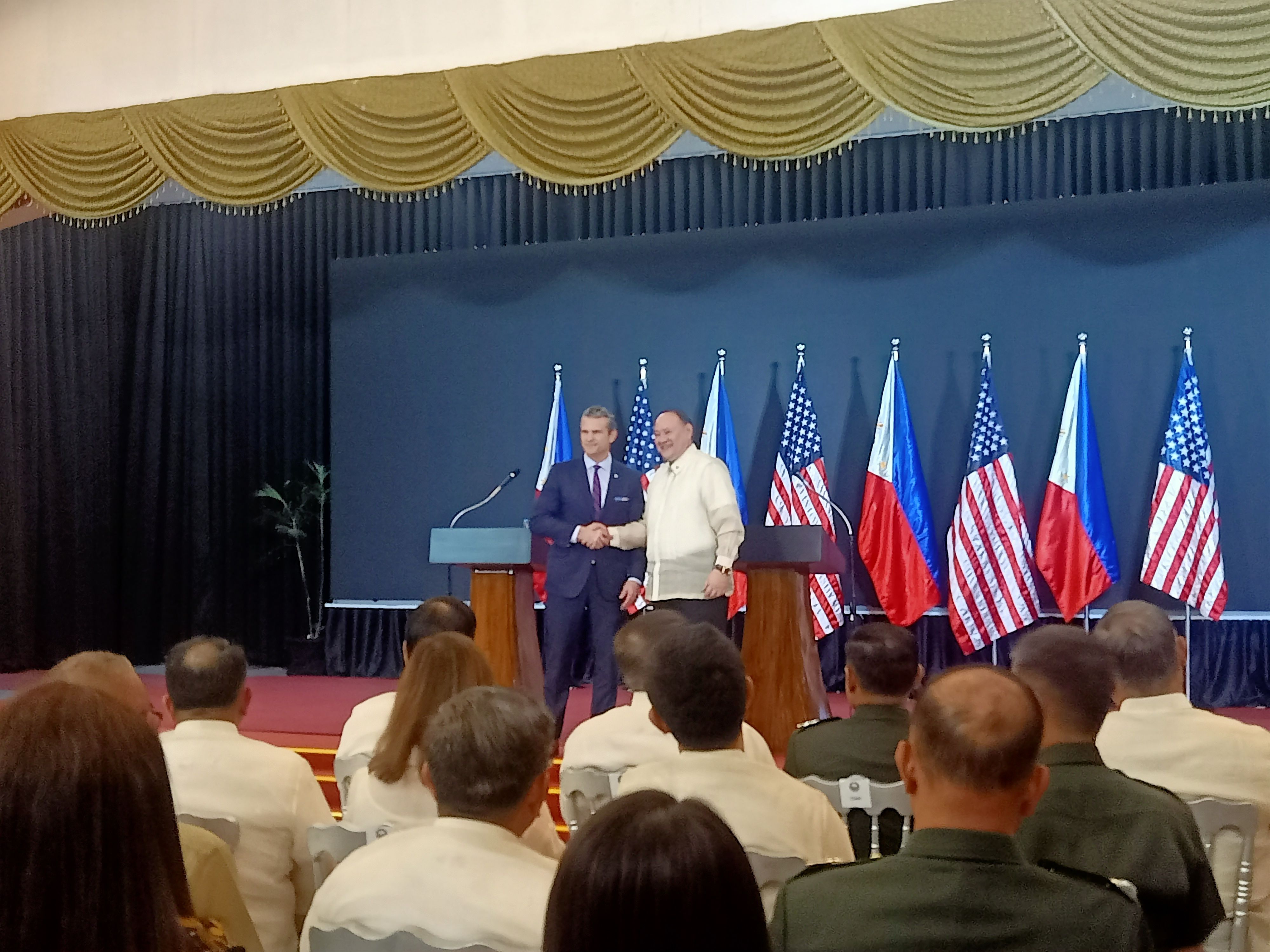PH, US agree to re-establish deterrence in Indo-Pacific amid Chinese aggression

The Philippines and United States decided to re-establish deterrence in the Indo-Pacific region through the deployment of advanced capabilities to the Armed Forces of the Philippines (AFP), enhance the interoperability of Filipino and American troops, prioritize bilateral defense industrial cooperation, and hold a joint cyber campaign.
This was stressed during the bilateral defense ministerial meeting of Department of National Defense (DND) Secretary Gilberto Teodoro Jr. and US Department of Defense (US DoD) Secretary Pete Hegseth at Camp Aguinaldo in Quezon City on Friday, March 28.
This marked Hegseth’s first visit to the country and Asia since being appointed by US President Donald Trump as the Pentagon chief in January.
“This morning, I also had a chance to meet with President Marcos and Secretary Teodoro and I just had a, as I described, very productive discussion about how to not just continue, but accelerate the progress in the U.S.-Philippines alliance. We agreed on the next steps to re-establish, and that's key, re-establish deterrence in the Indo-Pacific region,” Hegseth said in a press conference after the meeting.
Such re-establishment of deterrence, according to Hegseth, is "necessary to prevent war."
"What we're dealing with right now is many years of deferred maintenance, of weakness, that we need to re-establish strength and deterrence in multiple places around the globe, but permanently today for this region," he added.
Hegseth said such efforts build on an ongoing $500 million commitment in Foreign Military Financing and other security assistance to support the Philippines’ military modernization.
The administration of President Marcos Jr. has established closer cooperation with the United States as China tightens its grip in the South China Sea, including parts of the West Philippine Sea (WPS).
“What is at stake in our unilateral and bilateral activities is not merely the security of either the United States or the Philippines. We are facing a common threat which now is the overreach of the Communist Party of China,” Teodoro said.
"The Indo-Pacific, the rule of international law, freedom of navigation and freedom, individual, personal freedoms are what are at stake here," he continued.
Advanced weaponry, trainings
During their meeting, Hegseth committed to Teodoro that the US will deploy additional advanced capabilities to the Philippines including the Nemesis anti-ship missile system and highly capable unmanned surface vehicles (USVs) in Exercise Balikatan this April.
“These systems will enable U.S. forces and the Armed Forces of the Philippines to train together on using advanced capabilities to defend the Philippines’ sovereignty,” he said.
The two defense chiefs also concurred with conducting bilateral special operation forces training in Batanes island as part of efforts to enhance the interoperability of their troops for high-end operations.
They also agreed to prioritize bilateral defense industrial cooperation, including co-producing unmanned systems and increasing combined logistics support.
“We can talk about big systems and advanced technologies, but if you don't have logistics support, I see the folks who run military, run formations, you need logistics support to actually operate and advance forward,” Hegseth said.
“These initiatives will help us share burdens and promote a more comprehensive partnership. We intend for these efforts to boost both of our economies and strengthen supply chain resilience,” he added.
Finally, Hegseth and Teodoro said the two countries will launch a bilateral cyber campaign to reduce cyber vulnerabilities across the Philippines-US alliance.
“Increasing cybersecurity will allow even more advanced operational cooperation. The challenges we face require that kind of team effort,” Hegseth said.
PH-US ties
Meanwhile, Teodoro said Hegseth’s trip to the country “signals how important our bilateral alliance with our only treaty partner, the United States, is.”
“We are gratified by the importance placed on the stability and enhancement of this relationship as a lynchpin of securing peace and stability in the Indo-Pacific,” Teodoro said.
Aside from the US, Teodoro said the Philippines is also working closely with “like-minded” partners in re-establishing deterrence in the Indo-Pacific.
“This will mean increased interoperational activities, joint exercises, realistic training in a myriad of scenarios to mirror what may be possible in the future. God forbid, however, we must be prepared to answer and to meet and even to deter any possibility in the future for our mutual defense and the defense of freedom and international growth,” he said.
In fact, Hegseth and Teodoro's bilateral meeting coincided with a multilateral cooperative activity (MCA) among the forces of the Philippines, United States, and Japan in the West Philippine Sea, according to the DND chief.
Teodoro noted that the Philippines will also fortify the Enhanced Defense Cooperation Agreement (EDCA) locations in the country. At present, there are nine EDCA sites, including four locations that were granted by the Marcos administration upon the request of the US government.